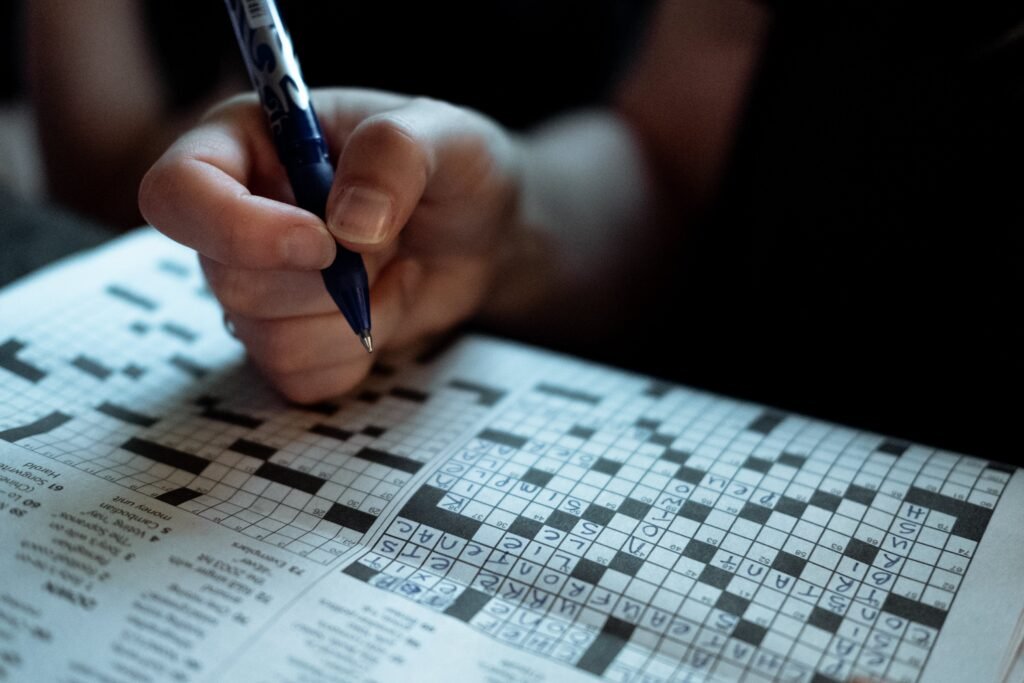Welcome, crossword enthusiasts and puzzle lovers! Are you ready to embark on a journey of words, wit, and mind-boggling challenges? If so, then the New York Times (NYT) crossword puzzle is here to test your skills and entertain your brain like never before. This iconic puzzle has captured the hearts and minds of millions with its clever clues, intricate grids, and rich history. So grab a pencil or fire up your favorite crossword app as we dive into the fascinating world of NYT crossword clue solving! Prepare yourself for an experience that will provide hours of entertainment. Let’s begin!
The History of the New York Times (NYT) Crossword Puzzle
The New York Times (NYT) Crossword Puzzle has a rich and fascinating history that spans over 75 years. It all began on February 15, 1942, when the first crossword puzzle appeared in The New York Times Sunday edition.
Arthur Wynne, a British journalist, is credited with creating the first crossword puzzle back in 1913. However, it wasn’t until almost three decades later that the NYT decided to include crosswords as part of their newspaper offering.
Since its inception, the NYT Crossword Puzzle has become an iconic feature of the newspaper. It’s known for its challenging clues and clever wordplay that keeps puzzlers coming back for more. Each day of the week offers a different level of difficulty: Monday puzzles are usually easier while Saturday puzzles are notoriously tough.
Over time, the popularity of solving crossword puzzles has grown exponentially. People from all walks of life enjoy tackling these brain-teasers as a way to relax or challenge themselves mentally.
The NYT Crossword Puzzle also holds cultural significance by reflecting societal changes throughout history. Clues often reference current events and popular culture, making each puzzle like a snapshot in time.
Tips for Solving NYT Crossword Clues

Solving the New York Times (NYT) crossword puzzle can be both challenging and rewarding. Whether you’re a seasoned solver or just starting out, here are some tips to help you tackle those tricky clues.
1. Start with the easy clues: Begin by filling in the answers to any clues that seem obvious to you. This will give you a good foundation to build upon and help get your brain warmed up.
2. Use cross-referencing: Pay attention to any clue numbers that are followed by “see” or “see also.” These indicate that there is another clue related to the current one, which can provide helpful hints.
3. Look for wordplay: Many NYT crossword clues rely on clever wordplay and double meanings. Don’t take everything at face value; think outside the box and consider alternative interpretations of the clue.
4. Fill in common letters: If you have a few letters filled in for one answer, look for intersecting words where those letters could fit as well. This can help narrow down your options and make solving easier.
5. Use online resources sparingly: While it’s tempting to turn to online websites or apps for assistance, try not to rely on them too heavily. The true satisfaction comes from solving clues using your own knowledge and intuition.
Remember, solving crossword puzzles takes practice, so don’t get discouraged if you struggle at first! With time and experience, you’ll become more adept at deciphering those cryptic NYT crossword clues.
Challenges and Benefits of Solving the NYT Crossword Puzzle
Solving the New York Times crossword puzzle can be both a challenging and rewarding experience. It requires you to exercise your brain, think outside the box, and expand your knowledge in various subjects. However, it’s not always a walk in the park.
One of the challenges of solving these puzzles is deciphering those tricky clues. The NYT crossword clue often uses wordplay, puns, or obscure references that can leave even seasoned solvers scratching their heads. But fear not! With practice and perseverance, you’ll become better at unraveling these enigmatic hints.
Another challenge lies in filling in the grid with correct answers. Sometimes a seemingly perfect answer turns out to be incorrect when you try to fit it into surrounding squares. This forces you to reevaluate your assumptions and approach each clue with an open mind.
How to Find Entertainment in Solving Crossword Clues
Solving crossword puzzles can be a fun and engaging activity for puzzle lovers of all ages. Whether you’re a novice or an experienced solver, there are several ways to find entertainment in solving crossword clues.
One way is to challenge yourself by tackling more difficult puzzles. The New York Times (NYT) crossword puzzle offers a range of difficulty levels, from Monday’s relatively easy grid to Saturday’s challenging brain-teasers. Pushing yourself out of your comfort zone and attempting harder puzzles can provide a sense of accomplishment when you successfully complete them.
Another way to make solving crossword clues entertaining is by involving friends or family members. You can organize friendly competitions or solve together as a team. Collaborating with others not only adds a social element but also allows for brainstorming and sharing insights that may lead to faster completion times.
Conclusion
Solving the New York Times (NYT) crossword puzzle can be both challenging and entertaining. With its long-standing history, the NYT crossword has become a beloved pastime for many puzzle enthusiasts. Whether you’re a beginner or an experienced solver, there are several tips and tricks you can use to improve your skills and make the experience even more enjoyable.
The NYT crossword puzzle dates back to 1942 when it was first published in the newspaper. Since then, it has gained popularity for its clever clues and diverse range of topics. The puzzle is known for being challenging but also rewarding once you crack those elusive clues.
One way to find entertainment in solving the NYT crossword puzzle is by challenging yourself with more difficult grids. The puzzle offers a range of difficulty levels, and attempting harder ones can provide a sense of accomplishment when you successfully complete them.


